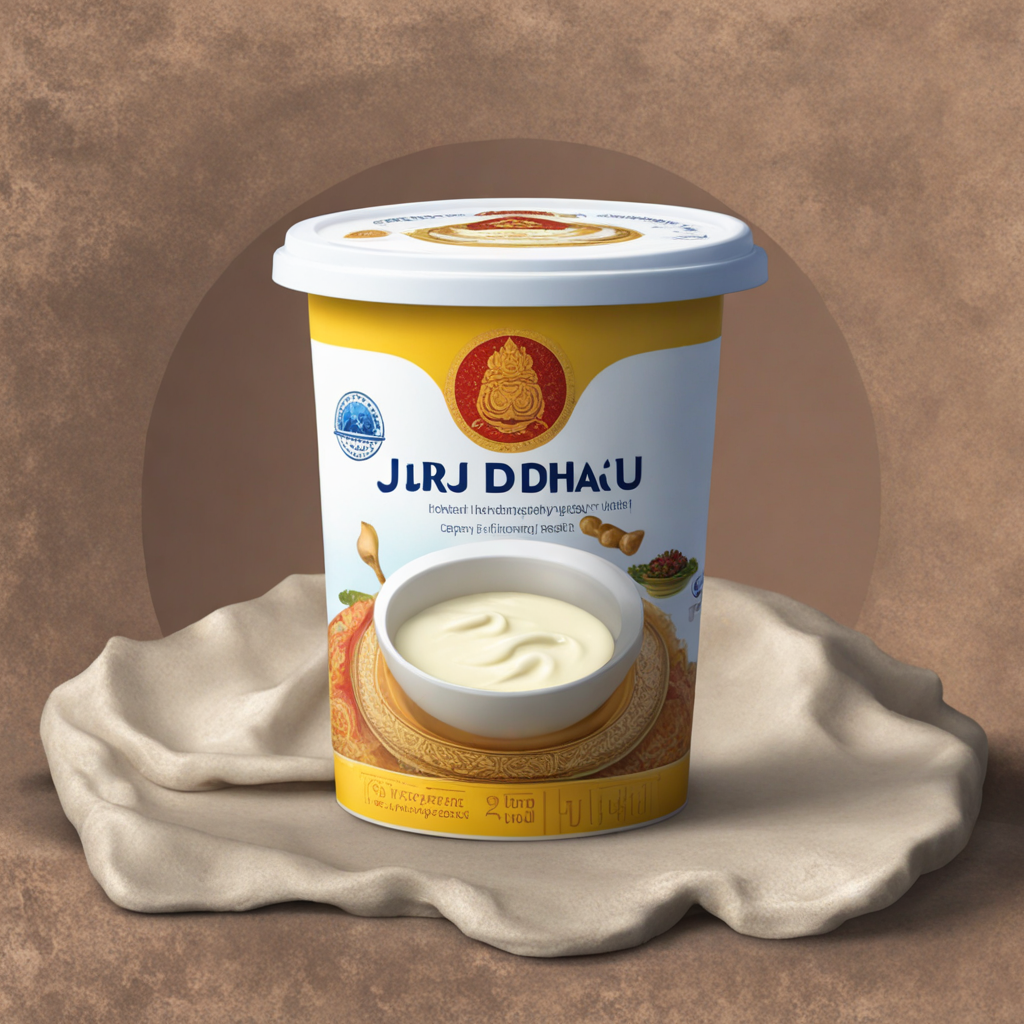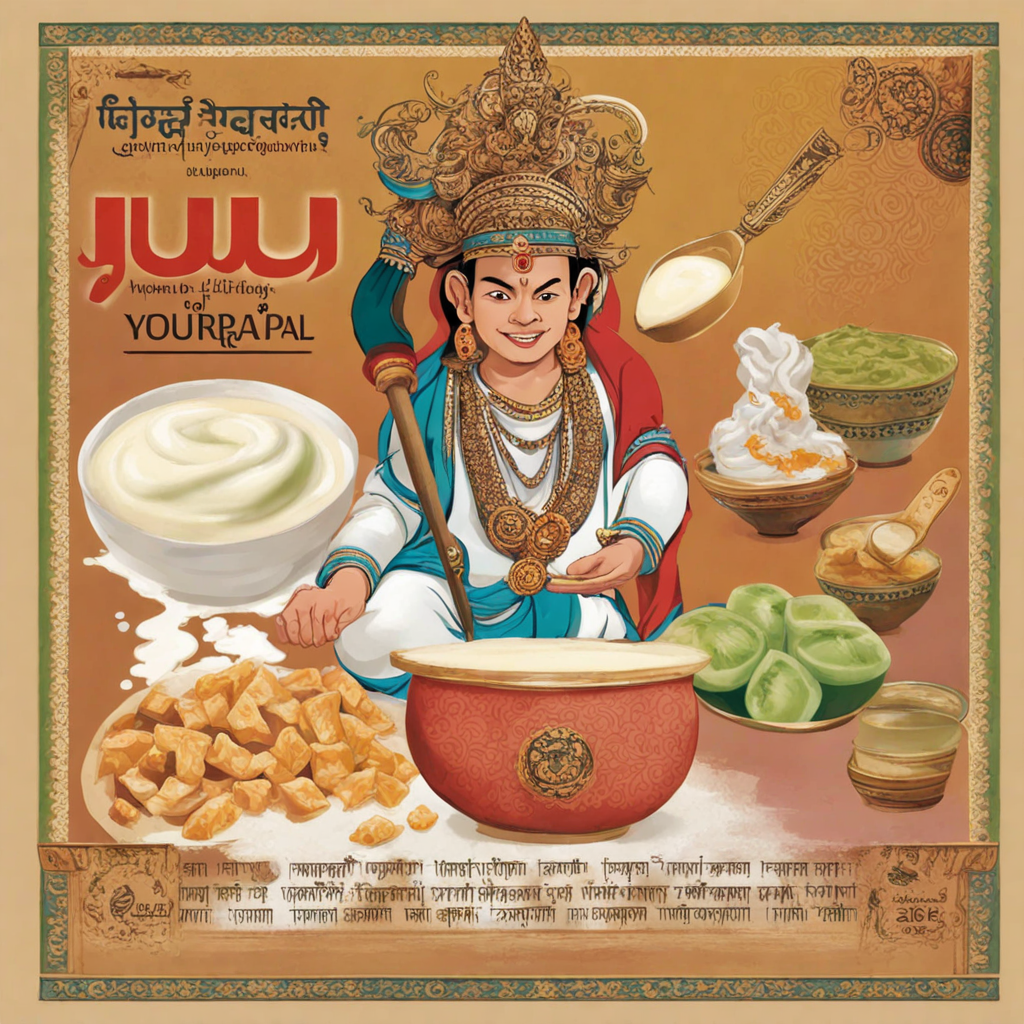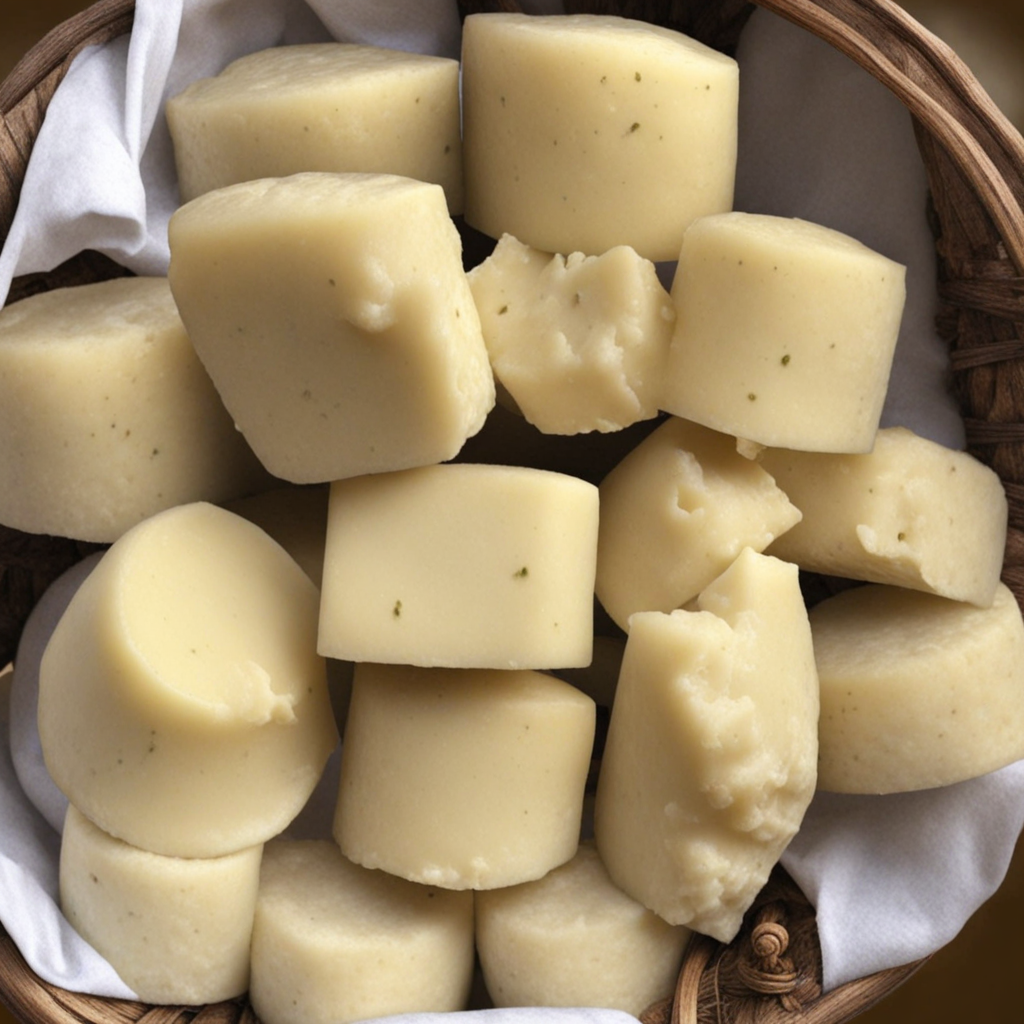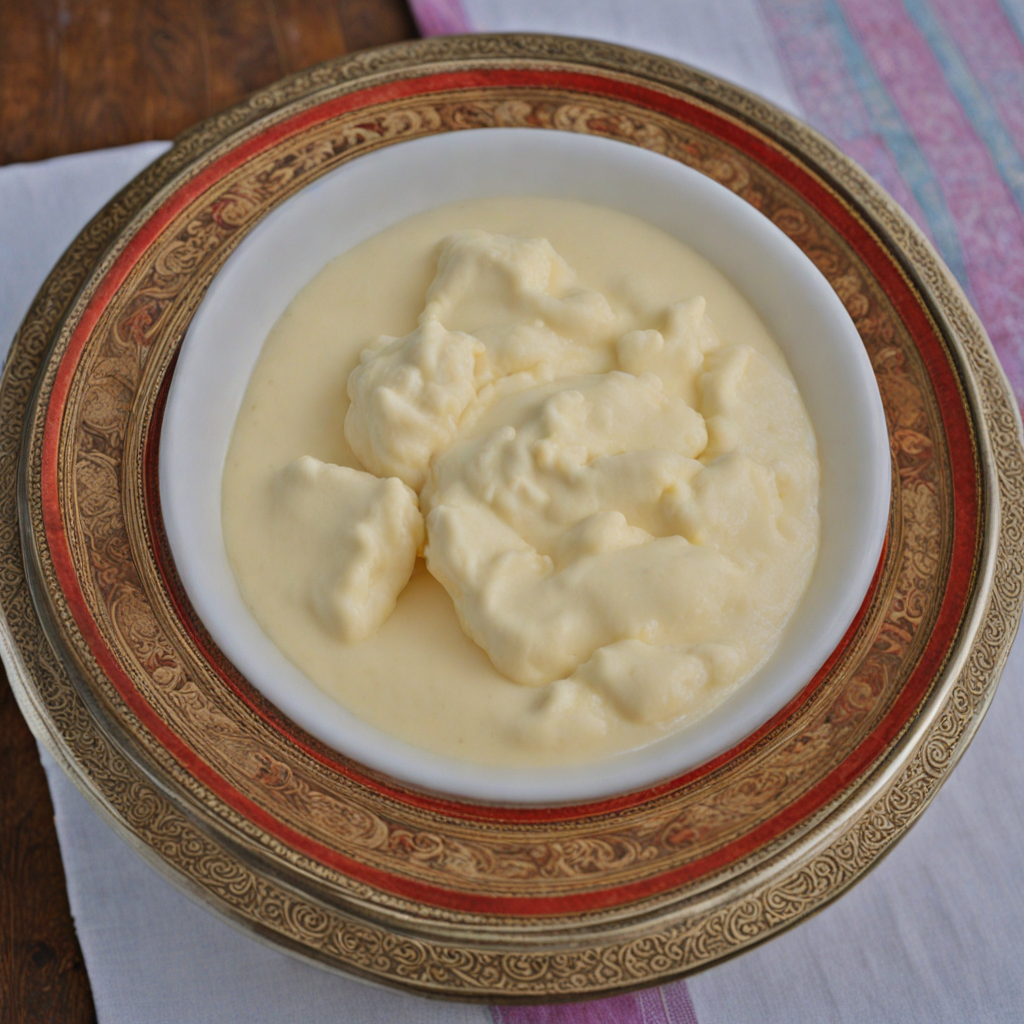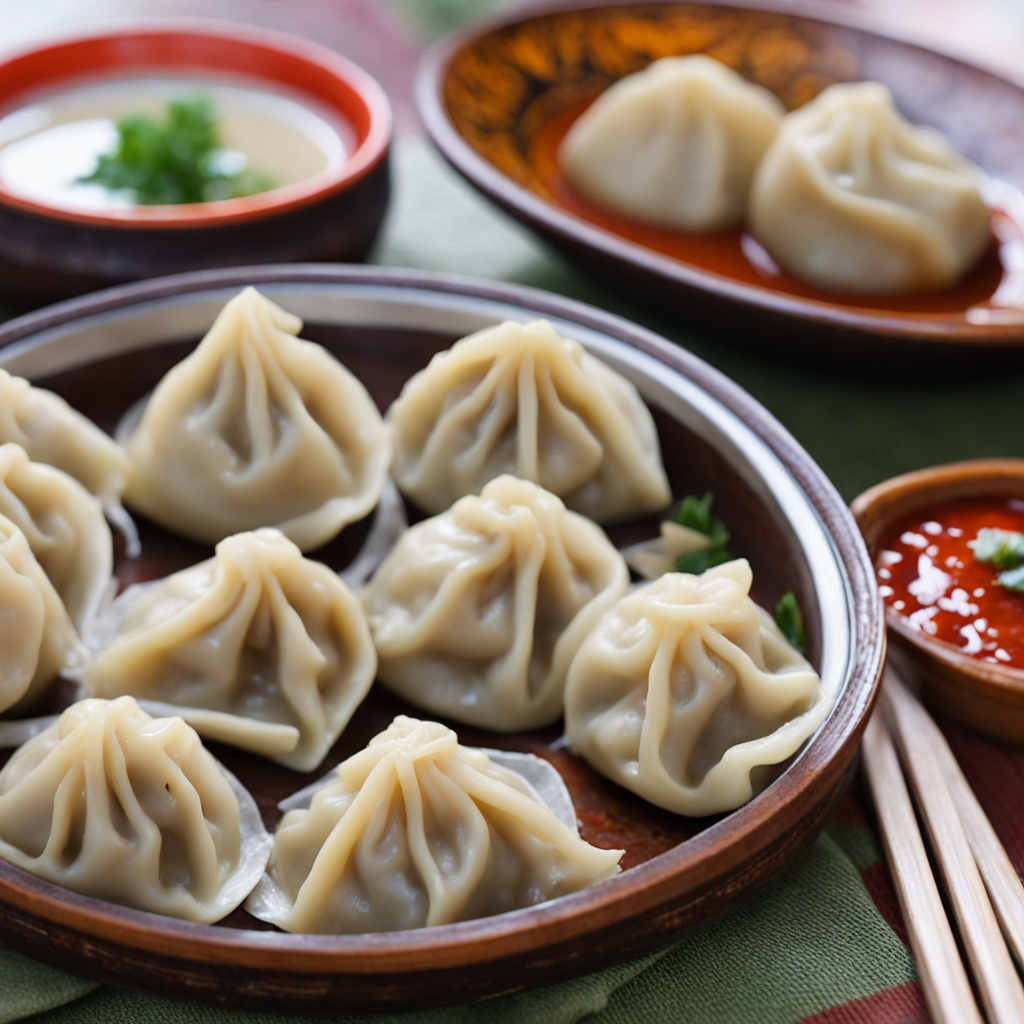JuJu Dhau
JuJu Dhau, often referred to as the "king of yogurt," is a traditional delicacy hailing from the enchanting country of Nepal, particularly cherished in the city of Bhaktapur. This creamy, rich yogurt is made from the milk of the indigenous cow, which is known for its high-fat content and unique flavor. The preparation process involves boiling the milk and then allowing it to cool before adding a natural starter culture. This artisanal method results in a thick, velvety texture that is both refreshing and indulgent, making it a beloved staple in local cuisine. What sets JuJu Dhau apart from regular yogurt is its distinct taste and unique sweetness. It is often enjoyed plain, allowing the natural flavors to shine through, or drizzled with honey and adorned with nuts for an added crunch. The yogurt's tanginess is perfectly balanced by its creamy richness, making it a delightful treat for both the palate and the senses. Traditionally served in beautifully crafted clay pots, JuJu Dhau not only pleases the taste buds but also adds a rustic charm to the dining experience. This delectable yogurt is often enjoyed during festivals, special occasions, or even as a daily snack, and it holds a significant cultural importance in Nepal. Whether you are savoring it after a hearty meal or using it as a base for various dishes, JuJu Dhau invites you to explore the authentic flavors of Nepali cuisine. Its unique characteristics and local significance make it a must-try for anyone looking to discover new tastes and culinary traditions.
How It Became This Dish
The History of Jujhu Dhau: A Culinary Gem from Nepal #### Origin and Traditional Roots Jujhu Dhau, often referred to as "king of yogurt," is a traditional delicacy from the heart of Nepal, particularly cherished in the Kathmandu Valley. This rich, creamy yogurt embodies the agricultural heritage and cultural richness of the region, making it a quintessential part of Nepalese cuisine. The name "Jujhu" is derived from the Newari language, where "jujhu" means "sweet," while "dhau" translates to "yogurt." The preparation of Jujhu Dhau is an art passed down through generations, deeply embedded in the practices of local Newar communities, who are known for their culinary ingenuity and rich traditions. The origins of this dish can be traced back to the ancient agricultural practices of the valley, where dairy farming played a crucial role in the sustenance of local populations. #### Cultural Significance In Nepalese culture, food is not just nourishment; it is a form of expression, celebration, and identity. Jujhu Dhau serves a significant role during various cultural and religious festivities, particularly among the Newars. It is often prepared for special occasions such as weddings, festivals, and religious ceremonies, symbolizing hospitality and generosity. The yogurt is typically served in a distinctive clay pot, which enhances its flavor and tradition, embodying the craftsmanship of local artisans. Moreover, Jujhu Dhau holds a special place in the Newar community's culinary repertoire. It is often used as an offering during rituals, especially during the annual festival of Indra Jatra, where it is presented to deities and ancestors as a sign of respect and gratitude. The creamy texture and sweet flavor of the yogurt are believed to please the gods, making it an integral part of spiritual practices. #### Ingredients and Preparation The making of Jujhu Dhau is an intricate process that reflects the traditional methods of dairy management in Nepal. The primary ingredient is fresh buffalo milk, known for its richness and high-fat content, which contributes to the yogurt’s creamy texture and deep flavor. In the past, milk was often sourced from local farms, ensuring that the yogurt was made from the freshest ingredients available. To prepare Jujhu Dhau, the milk is first boiled and then cooled to a specific temperature. Traditional methods often incorporate the use of a wooden churner, which helps in aerating the yogurt, enhancing its texture. After cooling, a small amount of previously prepared yogurt is added as a starter culture, allowing the fermentation process to begin. This fermentation typically lasts several hours, during which the yogurt develops its characteristic tanginess. The end result is a thick, creamy yogurt that is both sweet and slightly tart, often served chilled. Many families add sugar or jaggery for sweetness, and it is sometimes garnished with seasonal fruits, nuts, or honey, making it a delicious treat. #### Evolution Over Time As Nepal has evolved, so too has the preparation and consumption of Jujhu Dhau. While the traditional methods remain prevalent, modernization and globalization have introduced various innovations to this age-old dish. In urban areas, the availability of commercial dairy products has led to changes in the way people consume yogurt. Supermarkets now offer a range of yogurts, including flavored varieties, but the demand for traditional Jujhu Dhau remains strong. In recent times, Jujhu Dhau has garnered attention not just within Nepal but also among the global culinary community. Food enthusiasts and chefs have started to explore authentic Nepalese cuisine, highlighting Jujhu Dhau as a unique element of the country's gastronomic identity. This exposure has led to an increased appreciation for the dish, prompting chefs to incorporate it into fusion recipes or serve it alongside contemporary dishes, thus bridging the gap between tradition and modernity. #### Nutritional Aspects and Health Benefits In addition to its cultural significance, Jujhu Dhau is celebrated for its nutritional benefits. Being a dairy product, it is rich in calcium, protein, and probiotics, which are essential for gut health. The fermentation process enhances the digestibility of the yogurt, making it an excellent source of nutrients for individuals of all ages. Traditionally, it has been consumed as a part of a balanced diet, often paired with rice, lentils, or other staple foods, providing a wholesome meal. The health benefits of Jujhu Dhau have also been recognized in modern nutrition. With the increasing awareness of gut health and the role of probiotics, more people are leaning towards traditional fermented foods like Jujhu Dhau for their health advantages. As a result, this traditional yogurt has found its way into the diets of health-conscious individuals both in Nepal and abroad. #### Contemporary Recognition and Revival As part of a broader trend towards sustainable and local food practices, there has been a revival of interest in traditional foods across Nepal. Organizations and culinary schools are emphasizing the importance of preserving local food heritage, recognizing that dishes like Jujhu Dhau are not only part of a cultural legacy but also key to sustainable agricultural practices. Local farmers and artisans are being encouraged to maintain their traditional methods of production, ensuring that the quality of Jujhu Dhau remains high. Community workshops and food festivals are being organized to educate younger generations about the significance of traditional foods, fostering a sense of pride in local culinary practices. #### Conclusion Jujhu Dhau is more than just a yogurt; it is a symbol of Nepal's rich cultural tapestry, embodying the spirit of community, tradition, and culinary excellence. Its journey through time reflects the dynamic interplay between tradition and modernity, as it continues to adapt while retaining its essence. As Nepalese cuisine gains recognition on the global stage, Jujhu Dhau stands out not only for its unique flavors but also for the stories and traditions it represents, ensuring that this "king of yogurt" will continue to be celebrated for generations to come.
You may like
Discover local flavors from Nepal


